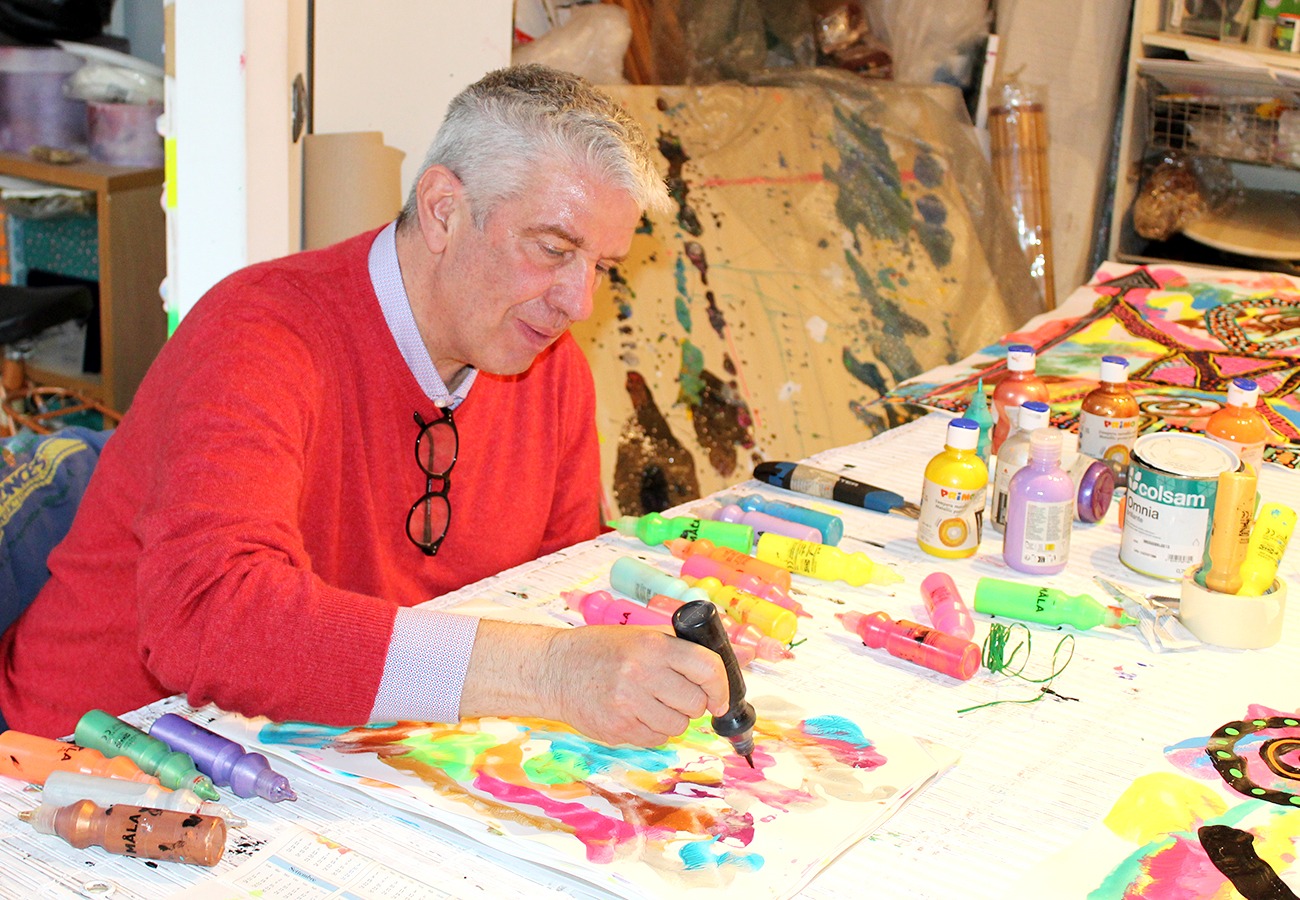From June 16 to 30, Arvedo Arvedi returns to exhibit in Chicago with the solo show “LINGUAGGI DIVERSI – Antiche Memorie,” set up in the spaces of the Mooney Foundation. It is a return to his roots, in a city he calls “my artistic home,” where, 30 years ago, he began his international career alongside John David Mooney. The title of the exhibition, deliberately doubled, reflects a layered poetics. “‘DIVERSE LANGUAGES’ represents my ongoing search for a personal language, while ‘Ancient Memories’ is the thematic heart of this exhibition: I wanted to recall the symbolism of cave paintings, those ancestral signs that appear strikingly similar in cultures separated by oceans and millennia.”
Looking at the works on display, there is an immediate feeling of being in front of a primordial tale, translated, however, into a contemporary visual grammar. Totemic figures, stylized warriors and cosmic symbols emerge against bright, almost fluorescent backdrops. “I wanted to rediscover a language that precedes words,” Arvedi explains. “We live in a world where everyone talks, but few understand each other. Going back to universal symbols means recovering an essential, immediate, shared form of communication.” It is a message that may sound political, but for the artist the intent is deeper: “Art interprets current events, but it goes beyond them. It serves to unite, not divide.”
Chicago, then, is not only an exhibition site, but a biographical and symbolic crossroads. “When John David Mooney invited me to collaborate on the ‘StarDance’ project in 1995, I was in my early twenties and had no awareness of what would happen next. That experience changed everything,” Arvedi says. And now, exactly 30 years later, he returns to that same foundation for an exhibition he calls “impressive.” Sixty works distributed in four sections, in a path that alternates large formats with more minute works, all made with the usual mixed technique on paper and fabric, in which color is spread with hands, brushes and pipettes.
The exhibition is divided into several sections. The first brings together large canvases depicting the four elements-fire, air, water and earth-with figures inspired by the cave paintings of the Hopi Indians and the famous drawings of the Nazca Plain in Peru. The second section houses watercolors of “Dancing Warriors,” which take up the warriors of rock carvings from the Camonica Valley and northern Sahara. The third is devoted to the so-called “Big-Headed Warriors,” figures that, according to some interpretations, depict gods or beings with helmet-shaped helmets, to which some attribute an extraterrestrial origin. Finally, an entire room is reserved for the “Art to Wear” project, with a collection of pashminas born from collaborations with various companies.
“Art has always been a powerful communication and marketing tool,” Arvedi explains. “In the ‘Art to Dress’ project, I create customized pashminas for companies, designed as exclusive gifts for their most important clients or collaborators. Each pashmina is born from a painting created specifically for the company, made in a limited series and designed to reinforce a sense of belonging and pride.” The fabrics, which are large in size (140×140 cm), lend themselves to multiple uses: scarf, sarong or conversation accessory, thanks in part to the bright colors and instantly recognizable graphics.
Arvedi’s working method is instinctive but at the same time structured. “I love to paint with my hands, I like to get dirty,” he relates. “It gives me the feeling of having direct contact with the work. Of course I also use brushes and pipettes, but the physicality of the gesture remains fundamental for me.” The main techniques he employs are Plaster, Chromolife and MirrorDust, depending on the effect he wants to achieve. “There are three modes by which I work: pure fantasy, when I let myself be guided by the creative flow; preparation for collections, where I study subjects and develop sketches; and corporate art, where I analyze the company’s logos, colors and values before creating the work.”
For Arvedi, an exhibition is never just an exhibition. “A painter uses the walls, but it’s important to fill the room with a diverse audience. That’s why I always organize side events: book presentations, theater performances, corporate meetings. In Chicago we will present Philip Kotler and Gabriele Carboni’s latest book and host a private event for an engineering design company.” A way to open new spaces for dialogue, between art, business and the public.
The article Ancient signs, contemporary visions: Arvedo Arvedi talks about his new exhibition in Chicago comes from TheNewyorkese.

